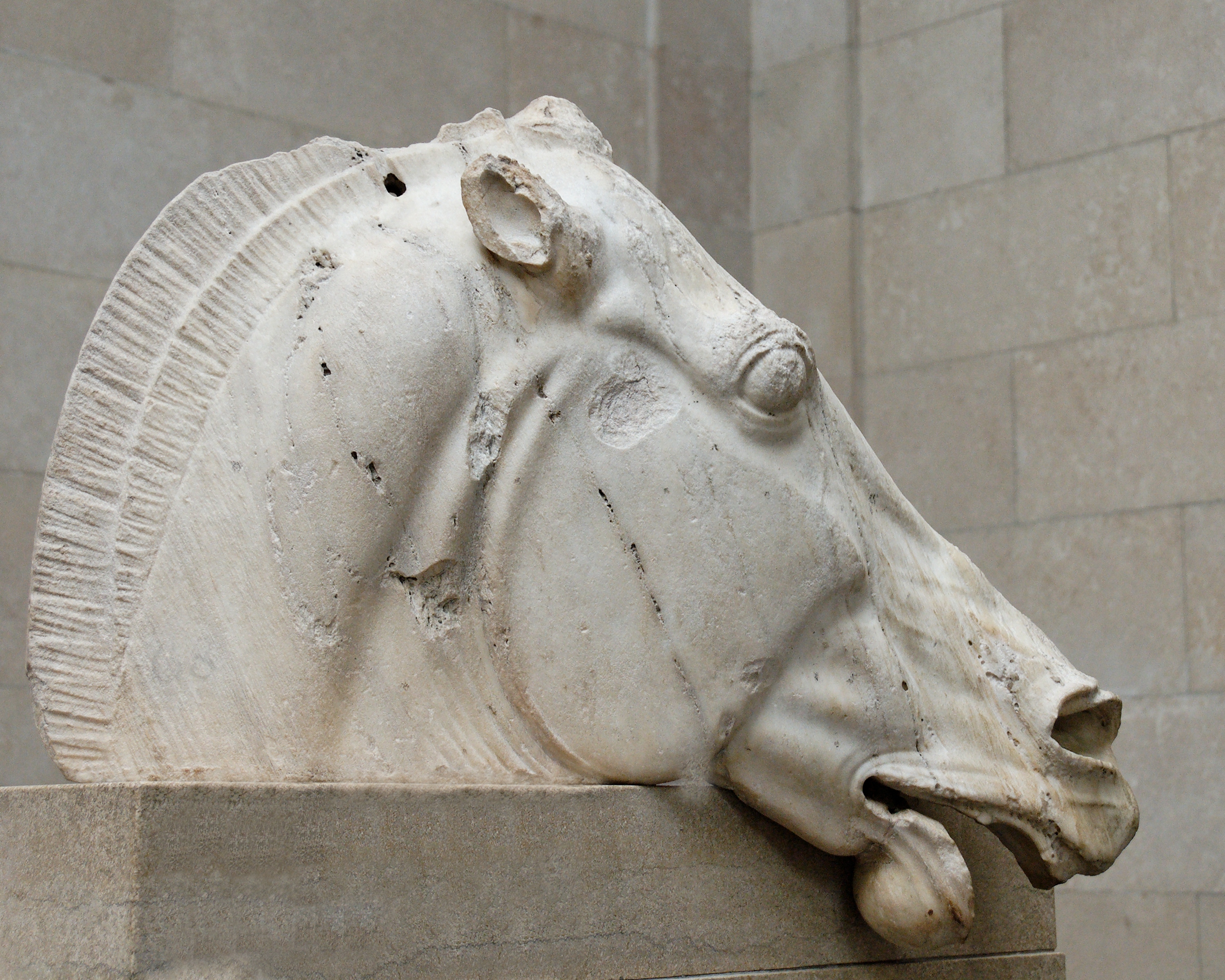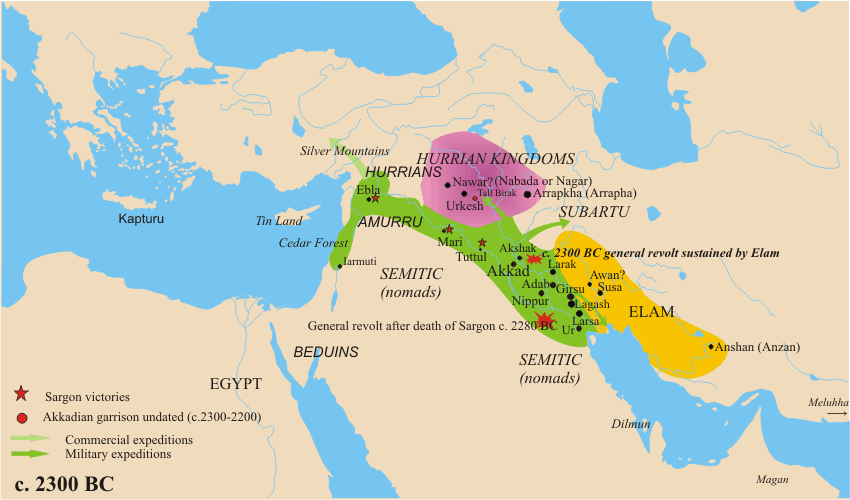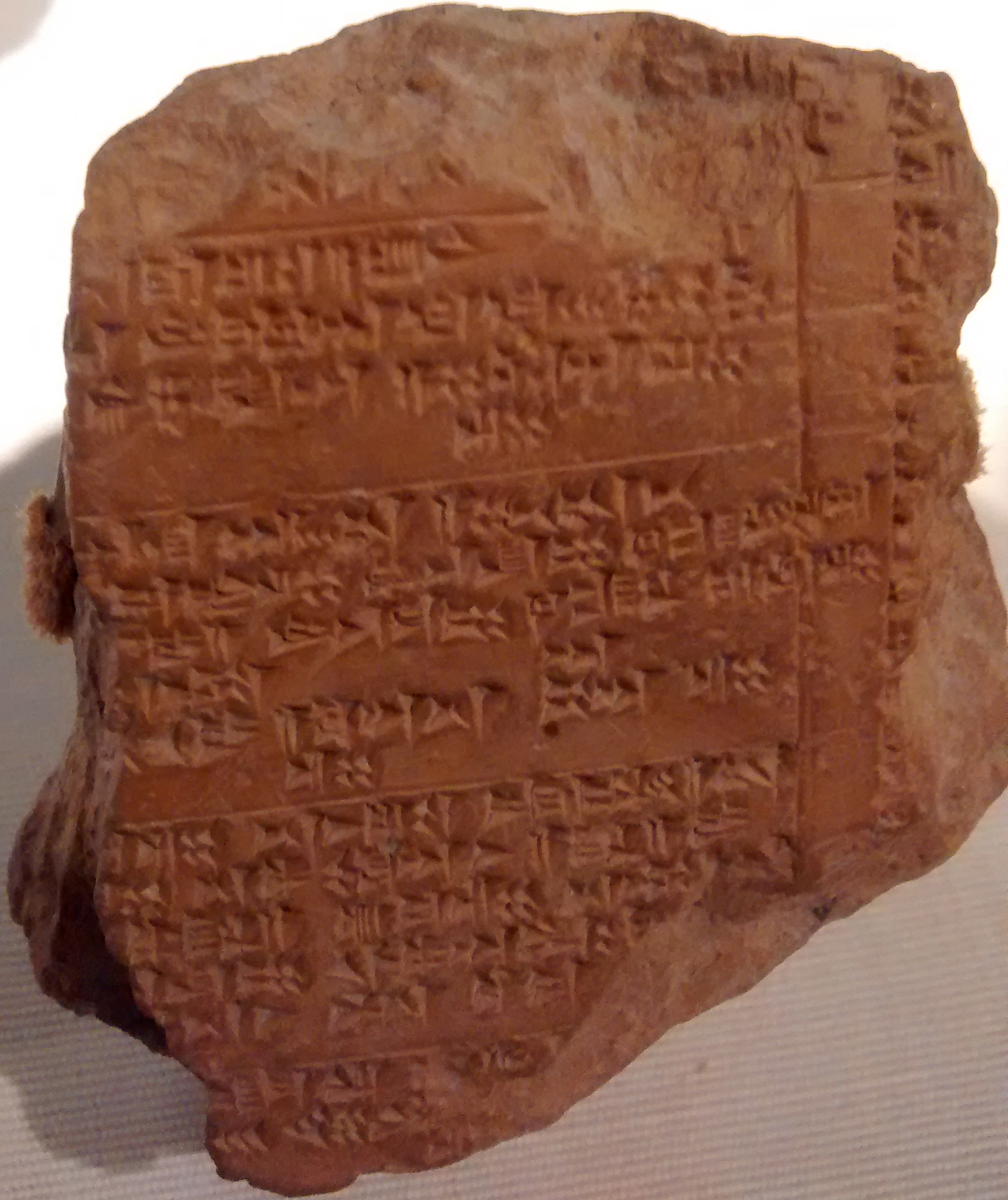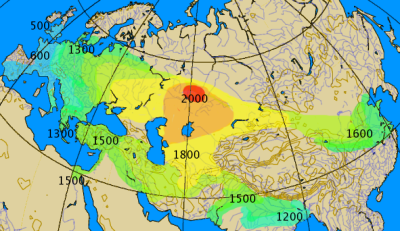|
Kikkuli
Kikkuli was the Hurrian "master horse trainer 'assussanni''of the land of Mitanni" (LÚ''A-AŠ-ŠU-UŠ-ŠA-AN-NI ŠA'' KUR URU''MI-IT-TA-AN-NI'') and author of a chariot horse training text written primarily in the Hittite language (as well as an Old Indo-Aryan language as seen in numerals and loan-words), dating to the Hittite New Kingdom (around 1400 BCE). The text is notable both for the information it provides about the development of Indo-European languages (both Hittite and the Hurian) and for its content. The text was inscribed on cuneiform tablets discovered during excavations of Boğazkale and Ḫattuša in 1906 and 1907. Content and influence "Thus speaks Kikkuli, master horse trainer of the land of Mitanni" (''UM.MA Ki-ik-ku-li'' LÚ''A-AŠ-ŠU-UŠ-ŠA-AN-NI ŠA'' KUR URU''MI-IT-TA-AN-NI''). Thus begins Kikkuli's text. The text contains a complete prescription for conditioning (exercise and feeding) Hittite war horses over 214 days. The Kikkuli Text addresses solel ... [...More Info...] [...Related Items...] OR: [Wikipedia] [Google] [Baidu] |
Kikkuli Text
Kikkuli was the Hurrian "master horse trainer 'assussanni''of the land of Mitanni" (LÚ''A-AŠ-ŠU-UŠ-ŠA-AN-NI ŠA'' KUR URU''MI-IT-TA-AN-NI'') and author of a chariot horse training text written primarily in the Hittite language (as well as an Old Indo-Aryan language as seen in numerals and loan-words), dating to the Hittite New Kingdom (around 1400 BCE). The text is notable both for the information it provides about the development of Indo-European languages (both Hittite and the Hurian) and for its content. The text was inscribed on cuneiform tablets discovered during excavations of Boğazkale and Ḫattuša in 1906 and 1907. Content and influence "Thus speaks Kikkuli, master horse trainer of the land of Mitanni" (''UM.MA Ki-ik-ku-li'' LÚ''A-AŠ-ŠU-UŠ-ŠA-AN-NI ŠA'' KUR URU''MI-IT-TA-AN-NI''). Thus begins Kikkuli's text. The text contains a complete prescription for conditioning (exercise and feeding) Hittite war horses over 214 days. The Kikkuli Text addresses sole ... [...More Info...] [...Related Items...] OR: [Wikipedia] [Google] [Baidu] |
On Horsemanship (Xenophon)
''On Horsemanship'' is the English title usually given to ', ''peri hippikēs'', one of the two treatises on horsemanship by the Athenian historian and soldier Xenophon (c. 430–354 BC). Other common titles for this work are ''De equis alendis'' and ''The Art of Horsemanship''. The other work by Xenophon on horsemanship is ', ''hipparchikos'', usually known as '' Hipparchicus'', or ''The cavalry commander''. The title ''De re equestri'' may refer to either of the two. ''On horsemanship'' deals with the selection, care and training of horses in general. Military training and the duties of the cavalry commander are dealt with in the ''Hipparchicus''. History Written in about 355 BC, the treatises of Xenophon were considered the earliest extant works on horsemanship in any literature until the publication by Bedřich Hrozný in 1931 of a Hittite text, that by Kikkuli of the Mitanni Kingdom, which dates from about 1360 BC. A treatise on horsemanship by Pliny the Elder is beli ... [...More Info...] [...Related Items...] OR: [Wikipedia] [Google] [Baidu] |
Hurrian
The Hurrians (; cuneiform: ; transliteration: ''Ḫu-ur-ri''; also called Hari, Khurrites, Hourri, Churri, Hurri or Hurriter) were a people of the Bronze Age Near East. They spoke a Hurrian language and lived in Anatolia, Syria and Northern Mesopotamia. The largest and most influential Hurrian nation was the kingdom of Mitanni, its ruling class perhaps being Indo-Aryan speakers. The population of the Hittite Empire in Anatolia included a large population of Hurrians, and there is significant Hurrian influence in Hittite mythology. By the Early Iron Age, the Hurrians had been assimilated with other peoples. The state of Urartu later covered some of the same area. Language The Hurrian language is closely related to the Urartian language, the language of the ancient kingdom of Urartu. Together they form the Hurro-Urartian language family. The external connections of the Hurro-Urartian languages are disputed. There exist various proposals for a genetic relationship to ot ... [...More Info...] [...Related Items...] OR: [Wikipedia] [Google] [Baidu] |
Catalogue Des Textes Hittites
The corpus of texts written in the Hittite language is indexed by the ''Catalogue des Textes Hittites'' (CTH, since 1971). The catalogue is only a classification of texts; it does not give the texts. One traditionally cites texts by their numbers in CTH. Major sources for studies of selected texts themselves are the books of the StBoT series and the online ''Textzeugnisse der Hethiter''. CTH numbering scheme The texts are classified as follows: *Historical Texts (CTH 1–220) *Administrative Texts (CTH 221–290) *Legal Texts (CTH 291–298) *Lexical Texts (CTH 299–309) *Literary Texts (CTH 310–320) *Mythological Texts (CTH 321–370) *Hymns and Prayers (CTH 371–389) *Ritual Texts (CTH 390–500) *Cult Inventory Texts (CTH 501–530) *Omen and Oracle Texts (CTH 531–582) *Vows (CTH 583–590) *Festival Texts (CTH 591–724) *Texts in Other Languages (CTH 725–830) *Texts of Unknown Type (CTH 831–833) Selected texts Some Wikipedia articles dedicated to specific Hittite te ... [...More Info...] [...Related Items...] OR: [Wikipedia] [Google] [Baidu] |
Mitanni
Mitanni (; Hittite cuneiform ; ''Mittani'' '), c. 1550–1260 BC, earlier called Ḫabigalbat in old Babylonian texts, c. 1600 BC; Hanigalbat or Hani-Rabbat (''Hanikalbat'', ''Khanigalbat'', cuneiform ') in Assyrian records, or ''Naharin'' in Egyptian texts, was a Hurrian-speaking state in northern Syria and southeast Anatolia (modern-day Turkey). Since no histories or royal annals/chronicles have yet been found in its excavated sites, knowledge about Mitanni is sparse compared to the other powers in the area, and dependent on what its neighbours commented in their texts. The Hurrians were in the region as of the late 3rd millennium BC. A king of Urkesh with a Hurrian name, Tupkish, was found on a clay sealing dated c. 2300 BC at Tell Mozan.Salvini, Mirjo. "The earliest evidences of the Hurrians before the formation of the reign of Mittanni." Urkesh and the Hurrians Studies in Honor of Lloyd Cotsen. Urkesh/Mozan Studies Bibliotheca Mesopotamica. Malibu: Undena Publications ( ... [...More Info...] [...Related Items...] OR: [Wikipedia] [Google] [Baidu] |
StBoT
Studien zu den Bogazköy-Texten (abbreviated StBoT; lit. Studies in the Bogazköy (Hattusa) Texts) edited by the German ''Akademie der Wissenschaften und der Literatur'' (Academy of Sciences and Literature), Mainz, since 1965, is a series of editions of Hittite texts and monographs on topics of the Anatolian languages. The series was intended to publish the Hittite texts that were excavated at Hattusa. Volumes :1. Otten and Soucek, ''Das Gelübde der Königin Puduhepa an die Göttin Lelwani'' (1965) :2. Onofrio Carruba, ''Das Beschwörungsritual für die Göttin Wišurianza'' (1966) :6. Erich Neu, ''Das hethitische Mediopassiv und seine indogermanischen Grundlagen'' (1968) :7. Otten and von Soden, ''Das akkadisch-hethitische Vokabular KBo I 44 + KBo XIII 1'' (1968) :10. Onofrio Carruba, ''Das Palaische: Texte, Grammatik, Lexicon'' (1970) :18. Erich Neu, ''Der Anitta-Text'' (1974) :22. Norbert Oettinger, '' Die militärischen Eide der Hethiter'' (1976) :30. Frank Starke, ''Die ... [...More Info...] [...Related Items...] OR: [Wikipedia] [Google] [Baidu] |
Hittite Texts
The corpus of texts written in the Hittite language is indexed by the ''Catalogue des Textes Hittites'' (CTH, since 1971). The catalogue is only a classification of texts; it does not give the texts. One traditionally cites texts by their numbers in CTH. Major sources for studies of selected texts themselves are the books of the StBoT series and the online ''Textzeugnisse der Hethiter''. CTH numbering scheme The texts are classified as follows: *Historical Texts (CTH 1–220) *Administrative Texts (CTH 221–290) *Legal Texts (CTH 291–298) *Lexical Texts (CTH 299–309) *Literary Texts (CTH 310–320) *Mythological Texts (CTH 321–370) *Hymns and Prayers (CTH 371–389) *Ritual Texts (CTH 390–500) *Cult Inventory Texts (CTH 501–530) *Omen and Oracle Texts (CTH 531–582) *Vows (CTH 583–590) *Festival Texts (CTH 591–724) *Texts in Other Languages (CTH 725–830) *Texts of Unknown Type (CTH 831–833) Selected texts Some Wikipedia articles dedicated to specific Hittite te ... [...More Info...] [...Related Items...] OR: [Wikipedia] [Google] [Baidu] |
Indo-Aryan Languages
The Indo-Aryan languages (or sometimes Indic languages) are a branch of the Indo-Iranian languages in the Indo-European languages, Indo-European language family. As of the early 21st century, they have more than 800 million speakers, primarily concentrated in India, Pakistan, Bangladesh, Nepal, Sri Lanka, and Maldives. Moreover, apart from the Indian subcontinent, large immigrant and expatriate Indo-Aryan–speaking communities live in Northwestern Europe, Western Asia, North America, the Caribbean, Southeast Africa, Polynesia and Australia, along with several million speakers of Romani languages primarily concentrated in Southeast Europe, Southeastern Europe. There are over 200 known Indo-Aryan languages. Modern Indo-Aryan languages descend from Old Indo-Aryan languages such as early Vedic Sanskrit, through Middle Indo-Aryan languages (or Prakrits). The largest such languages in terms of First language, first-speakers are Hindustani language, Hindi–Urdu (),Standard Hindi firs ... [...More Info...] [...Related Items...] OR: [Wikipedia] [Google] [Baidu] |
Indo-Aryan Language
The Indo-Aryan languages (or sometimes Indic languages) are a branch of the Indo-Iranian languages in the Indo-European language family. As of the early 21st century, they have more than 800 million speakers, primarily concentrated in India, Pakistan, Bangladesh, Nepal, Sri Lanka, and Maldives. Moreover, apart from the Indian subcontinent, large immigrant and expatriate Indo-Aryan–speaking communities live in Northwestern Europe, Western Asia, North America, the Caribbean, Southeast Africa, Polynesia and Australia, along with several million speakers of Romani languages primarily concentrated in Southeastern Europe. There are over 200 known Indo-Aryan languages. Modern Indo-Aryan languages descend from Old Indo-Aryan languages such as early Vedic Sanskrit, through Middle Indo-Aryan languages (or Prakrits). The largest such languages in terms of first-speakers are Hindi–Urdu (),Standard Hindi first language: 260.3 million (2001), as second language: 120 million (1999). Urdu ... [...More Info...] [...Related Items...] OR: [Wikipedia] [Google] [Baidu] |
Chariots
A chariot is a type of cart driven by a charioteer, usually using horses to provide rapid motive power. The oldest known chariots have been found in burials of the Sintashta culture in modern-day Chelyabinsk Oblast, Russia, dated to c. 2000 BCE. The critical invention that allowed the construction of light, horse-drawn chariots was the spoked wheel. The chariot was a fast, light, open, two-wheeled conveyance drawn by two or more horses that were hitched side by side, and was little more than a floor with a waist-high guard at the front and sides. It was initially used for ancient warfare during the Bronze and Iron Ages, but after its military capabilities had been superseded by light and heavy cavalries, chariots continued to be used for travel and transport, in processions, for games, and in races. Etymology The word "chariot" comes from the Latin term ''carrus'', a loanword from Gaulish. In ancient Rome and some other ancient Mediterranean civilizations, a ''biga'' requ ... [...More Info...] [...Related Items...] OR: [Wikipedia] [Google] [Baidu] |
Horse Training
Horse training refers to a variety of practices that teach horses to perform certain behaviors when commanded to do so by humans. Horses are trained to be manageable by humans for everyday care as well as for equestrian activities from horse racing to therapeutic horseback riding for people with disabilities. Historically, horses were trained for warfare, farm work, sport and transport. Today, most horse training is geared toward making horses useful for a variety of recreational and sporting equestrian pursuits. Horses are also trained for specialized jobs from movie stunt work to police and crowd control activities, circus entertainment, and equine-assisted psychotherapy. There is tremendous controversy over various methods of horse training and even some of the words used to describe these methods. Some techniques are considered cruel; other methods are considered gentler and more humane. However, it is beyond the scope of this article to go into the details of various tr ... [...More Info...] [...Related Items...] OR: [Wikipedia] [Google] [Baidu] |
Chariot
A chariot is a type of cart driven by a charioteer, usually using horses to provide rapid motive power. The oldest known chariots have been found in burials of the Sintashta culture in modern-day Chelyabinsk Oblast, Russia, dated to c. 2000 BCE. The critical invention that allowed the construction of light, horse-drawn chariots was the spoked wheel. The chariot was a fast, light, open, two-wheeled conveyance drawn by two or more horses that were hitched side by side, and was little more than a floor with a waist-high guard at the front and sides. It was initially used for ancient warfare during the Bronze and Iron Ages, but after its military capabilities had been superseded by light and heavy cavalries, chariots continued to be used for travel and transport, in processions, for games, and in races. Etymology The word "chariot" comes from the Latin term ''carrus'', a loanword from Gaulish. In ancient Rome and some other ancient Mediterranean civilizations, a ''biga'' re ... [...More Info...] [...Related Items...] OR: [Wikipedia] [Google] [Baidu] |







